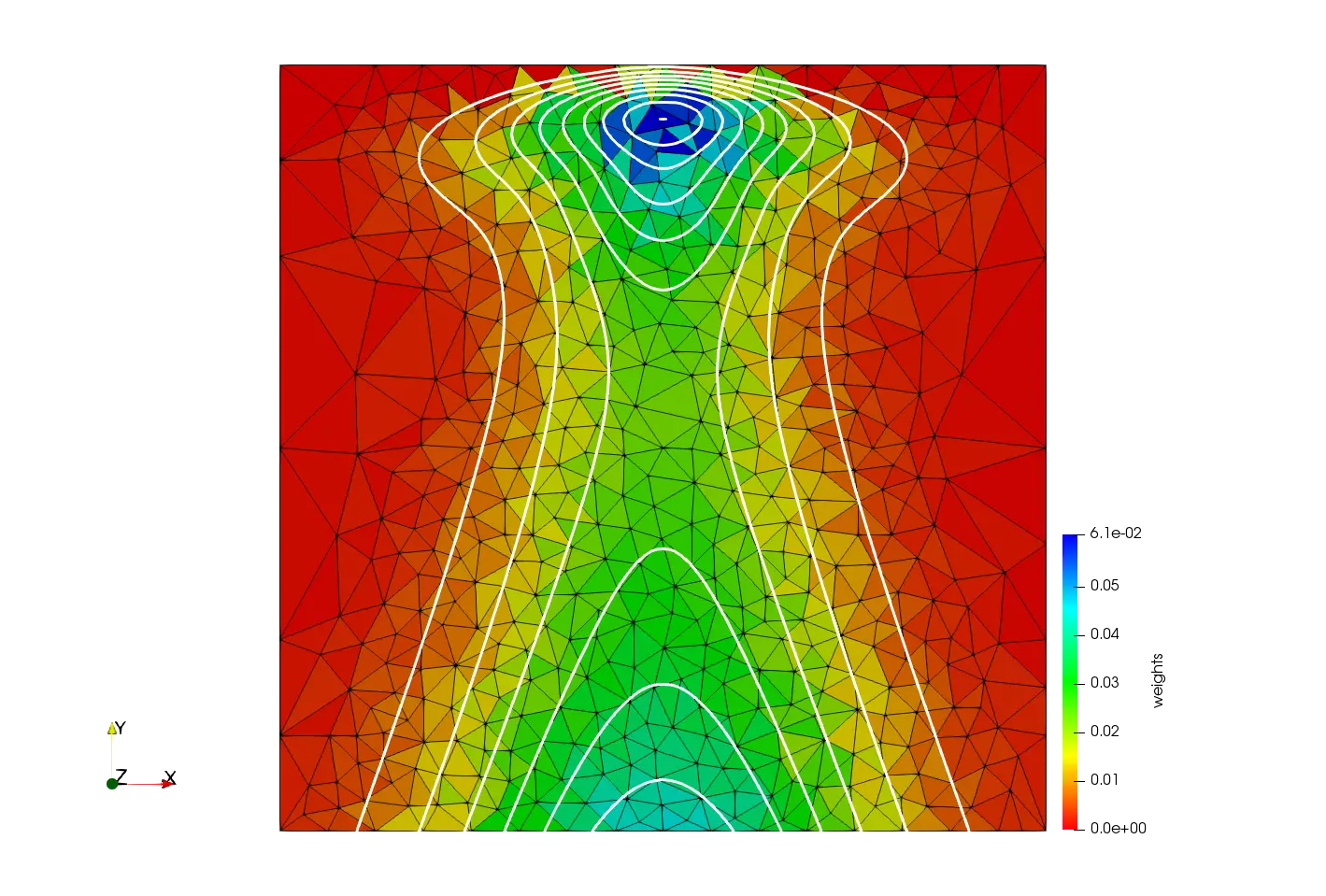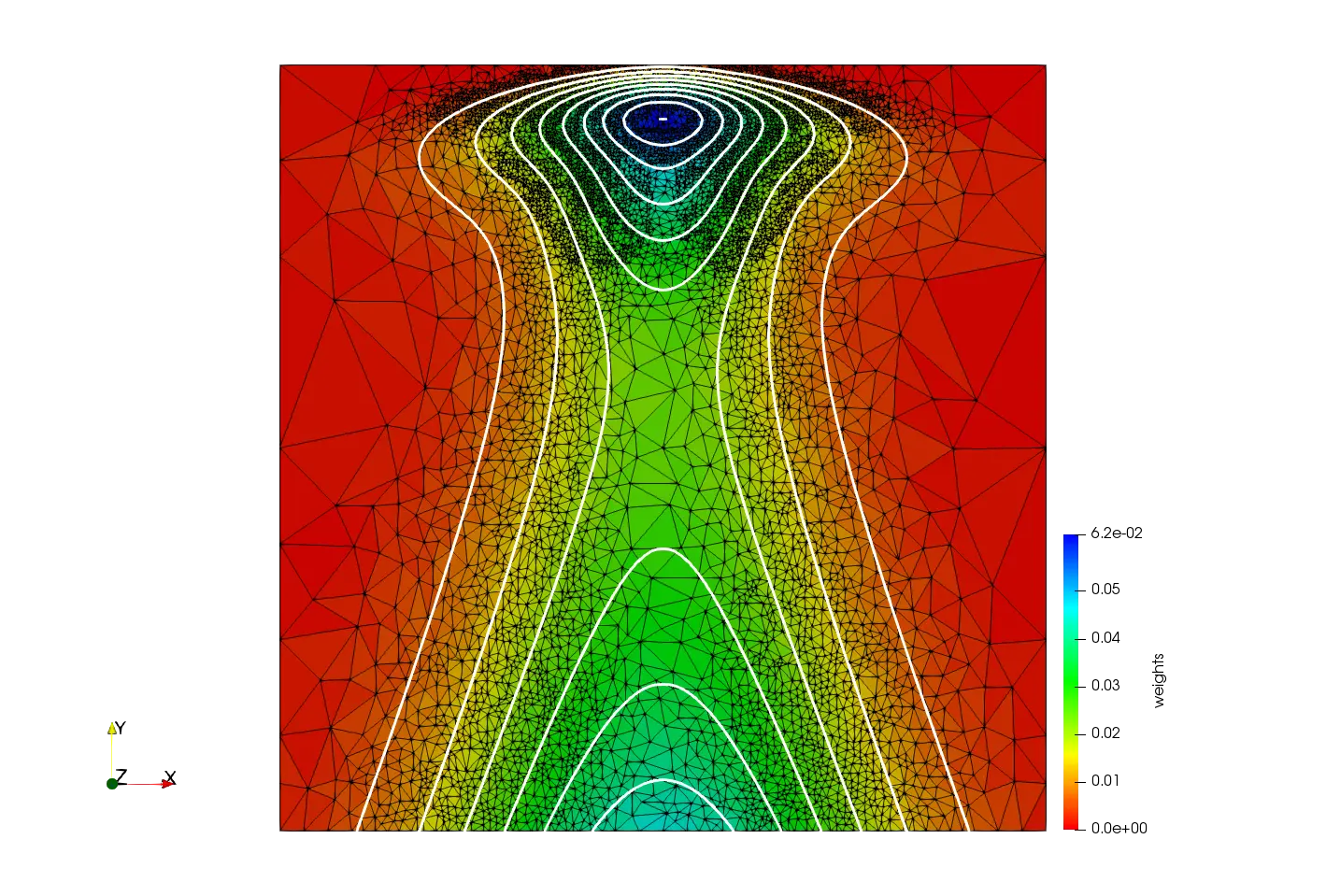Adaptive Mesh Refinement for Nuclear Femtography Data
What if we do not mesh spatial data, but data points of spin, energy and other characteristics of the nucleus? In this project, the CRTC group in collaboration with Jefferson Lab explores the idea of creating meshes, or tessellations as the physicists prefer to call them, based on random events that span out of both theoretical and experimental data. This effort is supported by the Center of Nuclear Femptography. Similar to the rest of the projects, adaptation is used in order to capture the features of the data while reducing the number of elements.




×
![]()
In all cases, mesh density is based on the rate of change of the values.
More examples in CRTC’s examples website
Related papers:
- C. Hyde, M. Kerver, S. Tsalikis, C. Tsolakis, G. Gavalian, C. Weiss, K. Garner, A. Angelopoulos, and N. Chrisochoides, “ Efficient Unstructured Tessellated Look-up Tables for Nuclear Femtography,” Computer Physics Communications, 2020. (in preparation)